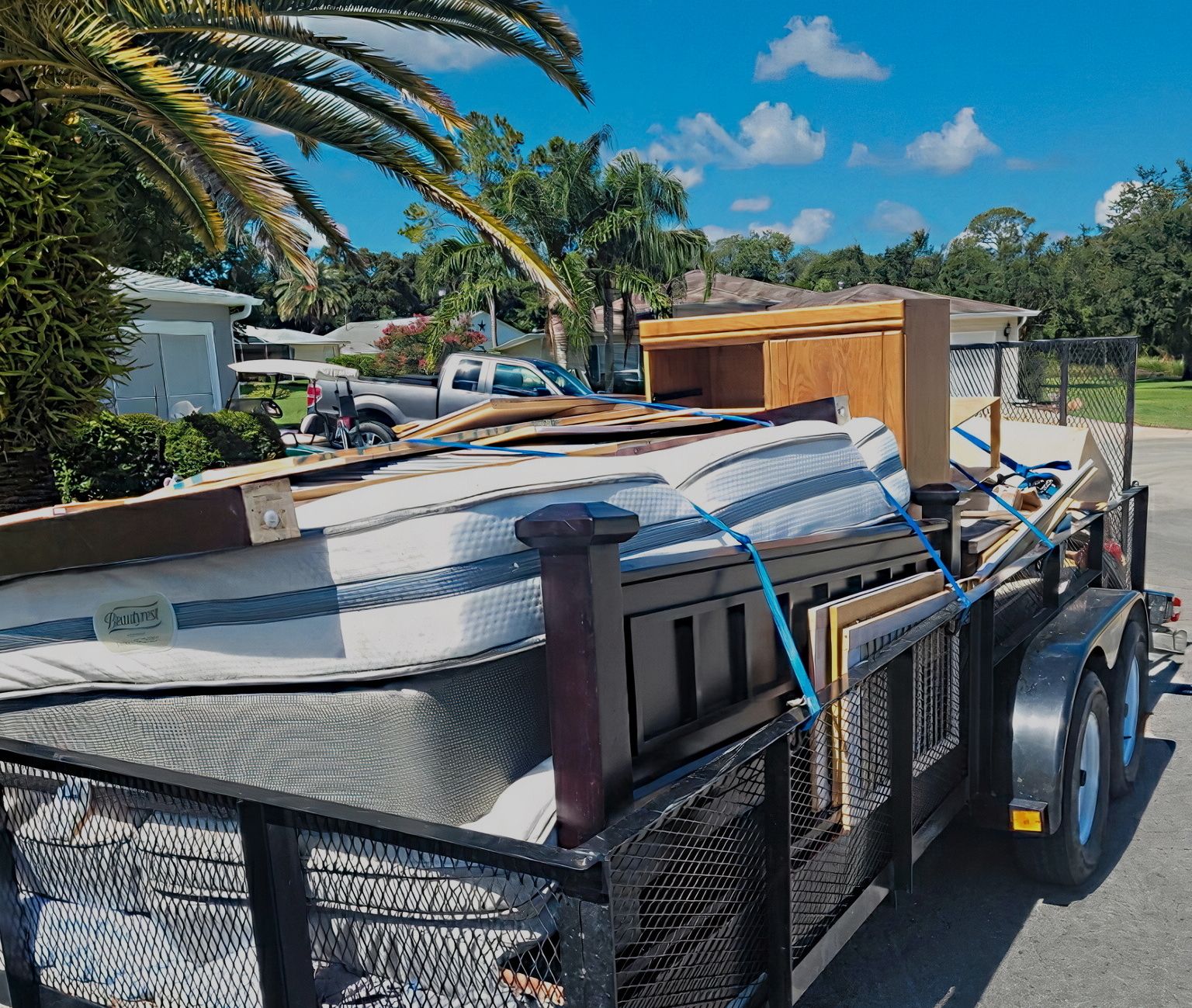Commercial Junk Removal Atlanta: Professional and Timely Solutions
Wiki Article
Professional Waste Management Strategies Customized for Industrial Setup
In industrial atmospheres, the management of waste is an important element that requires accuracy and competence. Customizing waste monitoring methods to match the unique demands of commercial setups is not just advantageous yet necessary for preserving functional effectiveness and environmental sustainability. By recognizing the complexities of different types of hazardous waste, implementing proper dealing with treatments for unsafe materials, and developing reliable reusing practices, services can substantially decrease their environmental impact and potential responsibilities. The quest for improved waste monitoring in commercial settings involves a careful method that stabilizes regulative compliance, cost-effectiveness, and eco-friendly duty.Significance of Tailored Waste Administration
Customized waste management techniques are necessary in industrial setups to optimize source use and decrease environmental influence. Industrial procedures produce a significant amount of waste, varying from solid results to chemical pollutants, positioning a threat to the atmosphere otherwise managed properly (Construction debris removal atlanta). By customizing waste monitoring approaches to fit the specific requirements and challenges of each industrial facility, firms can not just adhere to policies however additionally enhance operational performance and sustainabilityOne secret element of tailored waste administration is performing a comprehensive waste analysis to recognize the types and volumes of waste produced. This analysis allows firms to apply targeted solutions such as reusing programs, waste partition protocols, and waste-to-energy campaigns. By recognizing the structure of their waste streams, industrial centers can establish economical techniques to minimize waste generation at the resource, bring about long-term ecological advantages.

Kinds Of Hazardous Waste
What are the different categories of commercial waste commonly created in manufacturing processes? Hazardous waste can be identified into numerous main groups based upon its structure and attributes. Harmful waste is one of one of the most crucial types, including chemicals, solvents, hefty metals, and various other products that present a risk to human health or the environment. This classification frequently calls for special delivery and disposal techniques to avoid contamination and guarantee security.One more common type of industrial waste is non-hazardous waste, which includes materials like paper, plastics, and product packaging waste. While non-hazardous waste may not posture prompt risks, appropriate administration is still vital to decrease landfill usage and promote recycling and sustainability methods.

Contaminated Materials Handling Treatments
Reliable management of unsafe waste in industrial settings demands stringent adherence to established taking care of procedures to alleviate risks and make certain environmental safety and security. Contaminated materials handling treatments involve several vital steps to minimize the possible impact on human Get More Info health and the setting. Firstly, appropriate recognition and categorization of hazardous waste are essential. This consists of establishing the characteristics of the waste to determine the suitable handling, storage, and disposal methods.Second of all, as soon as recognized, hazardous waste must be meticulously set apart from non-hazardous waste to prevent contamination and ensure appropriate therapy. Storage space of contaminated materials should adhere to regulations relating to control, labeling, and compatibility to stop leakages, spills, or other incidents that can threaten workers or the environment.
Furthermore, dealing with treatments ought to consist of using personal protective equipment, employee training, and emergency situation feedback protocols. Routine inspections, surveillance, and documents of contaminated materials handling tasks are vital to preserving compliance and recognizing areas for improvement. By adhering to these structured treatments carefully, commercial centers can effectively handle harmful waste and support their dedication to ecological stewardship.
Executing Effective Reusing Practices

To carry out reliable reusing techniques, commercial facilities must first conduct a waste audit to recognize the kinds and quantities of recyclable materials produced in their hop over to here procedures. Based upon this audit, firms can then develop assigned recycling stations, supply proper training redirected here to employees on appropriate sorting methods, and work together with trusted recycling companions for the collection and handling of materials. Furthermore, establishing certain recycling objectives, tracking progression, and frequently communicating with personnel about the significance of recycling are essential steps to make certain the success and sustainability of recycling initiatives in commercial settings.
Monitoring and Continuous Renovation
To make sure the performance and sustainability of waste management approaches in commercial settings, the execution of durable monitoring and continual renovation procedures is imperative. Tracking includes monitoring key performance indications (KPIs) such as waste generation prices, recycling percentages, and disposal prices. Consistently examining these metrics permits businesses to identify locations for renovation and gauge the success of carried out waste monitoring initiatives.Continuous renovation is vital for refining processes over time. It includes analyzing checking data, determining inadequacies, and implementing adjustments to enhance waste management methods further. This iterative strategy cultivates a culture of continuous improvement and innovation within the organization.
Making use of technology like waste tracking software program and IoT sensing units can simplify monitoring efforts, offering real-time data for educated decision-making. Staff member training and engagement likewise play an essential function in making certain the success of surveillance and continual enhancement efforts, as frontline staff are commonly principals in waste management processes.
Final Thought
Finally, customized waste monitoring approaches are important for industrial settings to properly deal with different sorts of waste, including dangerous materials. By applying effective recycling methods and continually tracking and boosting waste management processes, industries can reduce their ecological influence and ensure compliance with policies. It is crucial for firms to focus on waste administration to safeguard the atmosphere and promote sustainability in their operations.Report this wiki page